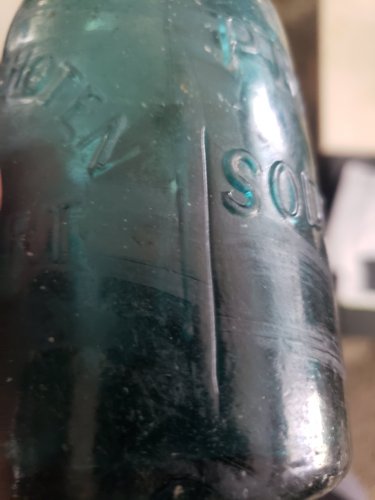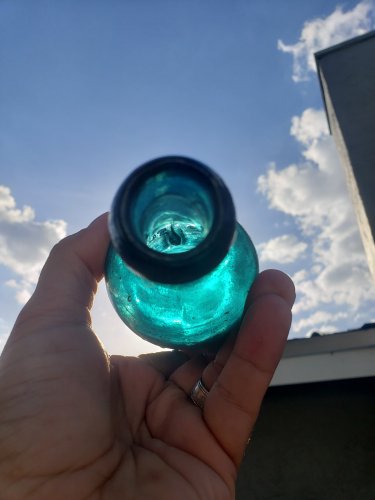J.R. Collector
Nomad Bottle Collector
I see this all the time and I believe Red used to tell me that it is a method for cooling thick runny hot glass. Since he isn't here anymore, I was hoping for clarification. I should pay attention more. I took a picture off the inside as best as I could to show the thick bump ( drip) of extra glass inside.


